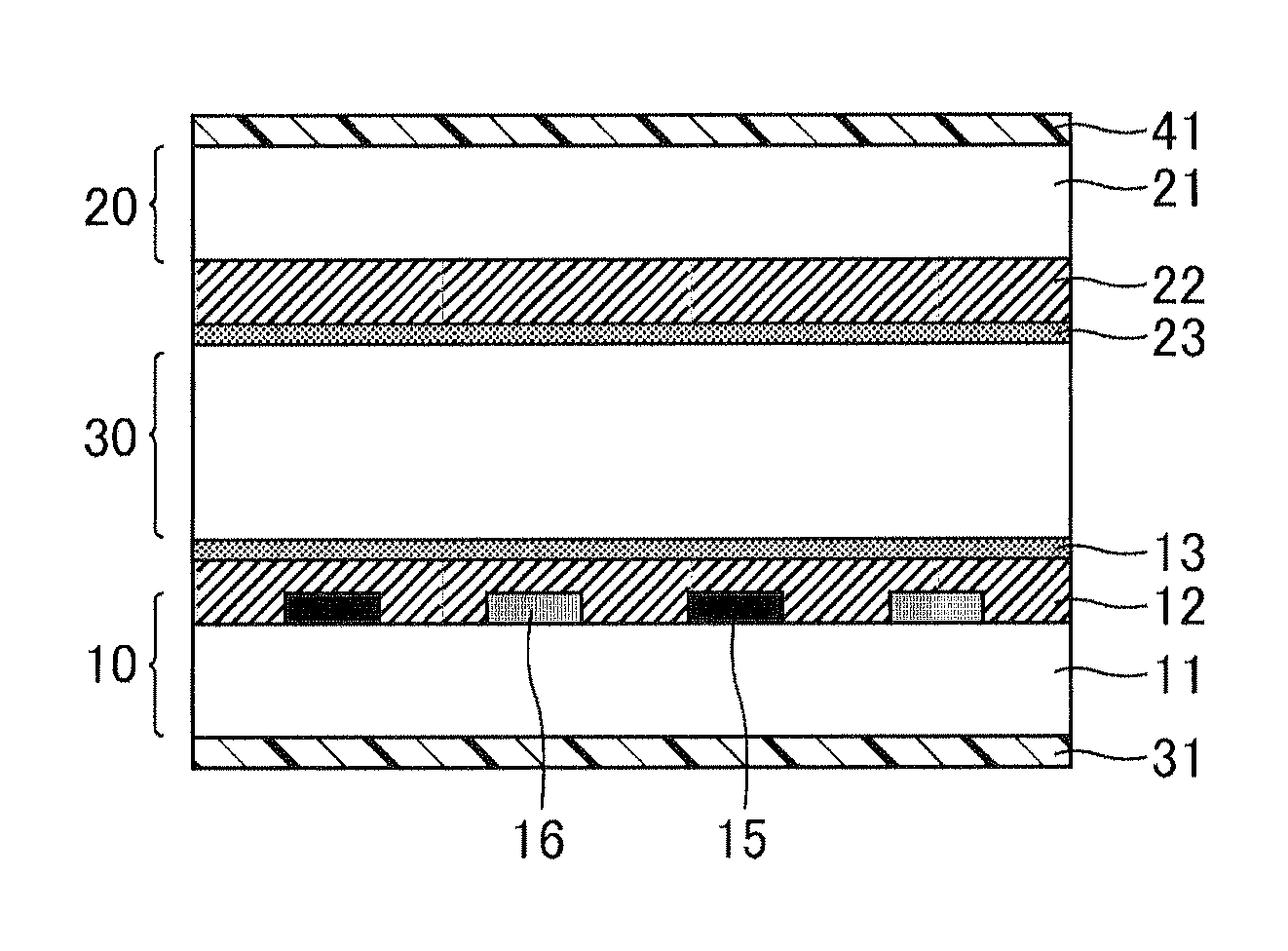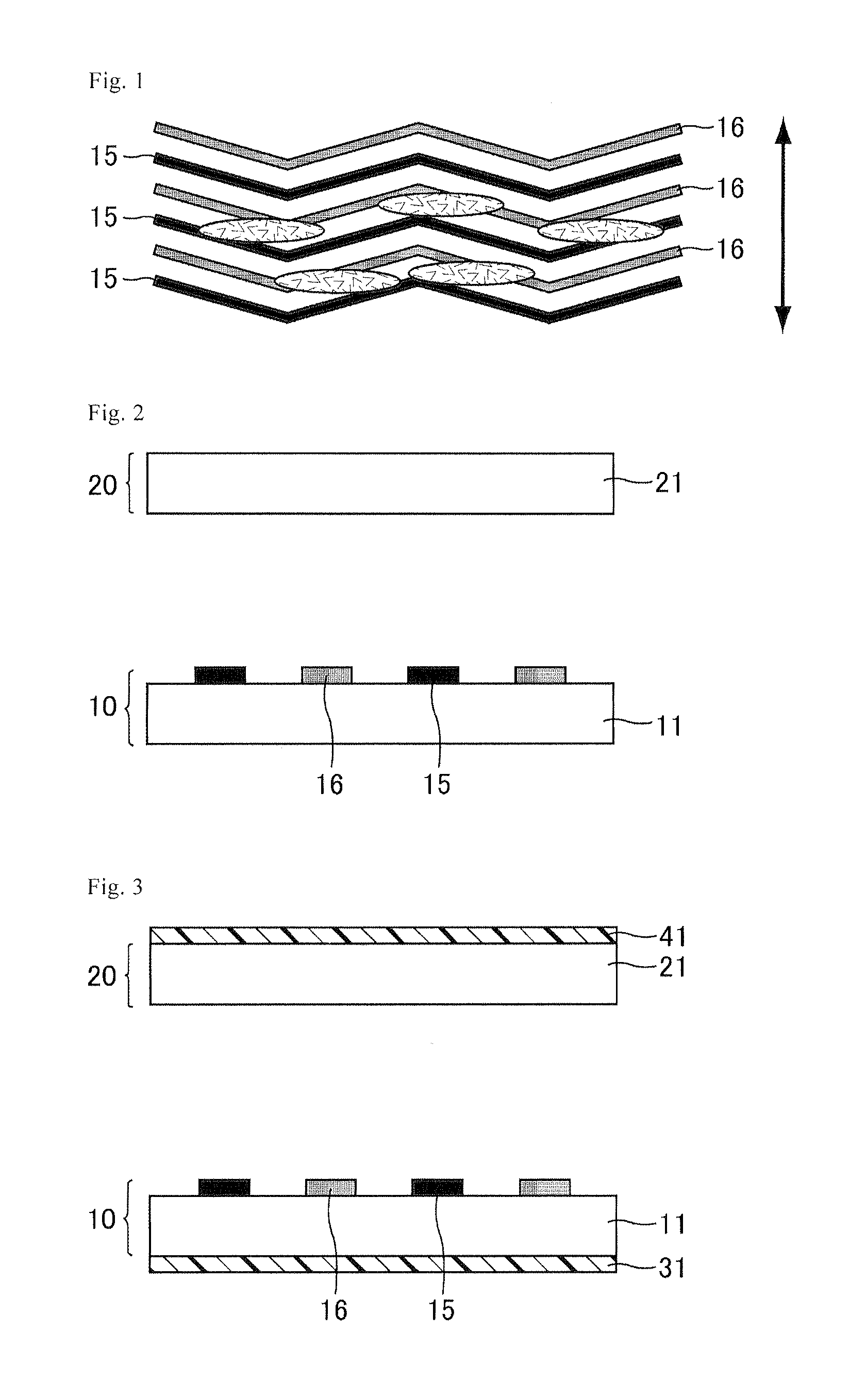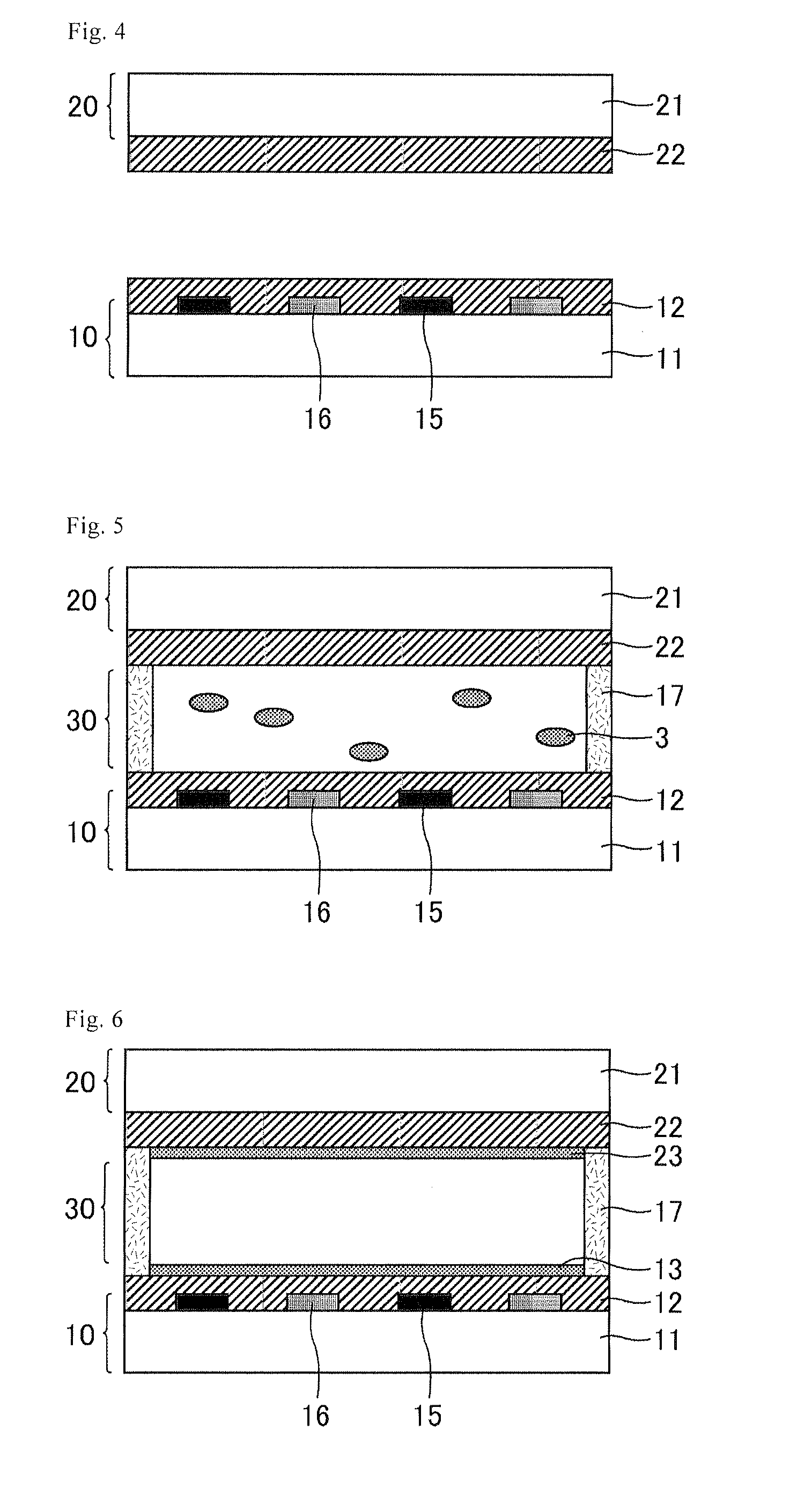Method of producing liquid crystal display device
- Summary
- Abstract
- Description
- Claims
- Application Information
AI Technical Summary
Benefits of technology
Problems solved by technology
Method used
Image
Examples
embodiment 1
[0067]The method of producing a liquid crystal display device according to Embodiment 1 will be described in detail. The liquid crystal display device produced according to Embodiment 1 is a liquid crystal display device of the so-called IPS mode, and as illustrated in FIG. 1, pixel electrodes 15 and common electrodes 16 are extended approximately in parallel to each other, while the respective electrodes are formed in a zigzag form. Thereby, when an electric field is applied, the electric field vector is approximately perpendicular to the length direction of the electrodes, and therefore, a multi-domain structure is formed, while satisfactory viewing angle characteristics can be obtained. In addition, the pixel electrodes 15 and the common electrodes 16 may also be formed respectively in a linear form, instead of being formed in a zigzag form. The two arrows in FIG. 1 indicate the directions of irradiation polarization (in the case of using positive type liquid crystal molecules). ...
example 1
[0102]A glass substrate including a pair of combteeth electrodes (a pixel electrode and a common electrode) formed on the surface (combteeth electrode substrate) and a bare glass substrate (counter substrate) were prepared, and a polyvinyl cinnamate solution that serves as a material of a horizontal alignment film (varnish) was coated on each of the substrates by a spin coating method. As the material of the combteeth electrode, IZO was used. Furthermore, the electrode width L of the combteeth electrode was set to 3 μm, and the inter-electrode distance S was set to 9 μm. The polyvinyl cinnamate solution was prepared by dissolving polyvinyl cinnamate in an amount of 3 wt % in a solvent obtained by mixing equal amounts of N-methyl-2-pyrrolidone and ethylene glycol monobutyl ether.
[0103]The varnish was coated by a spin coating method, and then provisional drying was carried out at 90° C. for one minute. Subsequently, while nitrogen purging was carried out, burning was carried out at 20...
example 2
[0121]As shown in FIG. 8, a liquid crystal cell was produced in the same manner as in Example 1, except that a conductive film formed from ITO was formed on the respective surfaces on the opposite side of the liquid crystal layer side of the combteeth electrode substrate and the counter substrate. The conductive films were formed by a sputtering method. After bonding of the substrates, the cell surface was rubbed with a rayon cloth before the PS treatment, but static electricity charging did not occur. That is, there was no occurrence of alignment disorder and image sticking before the PS treatment.
[0122]From the above results, it was found that when a conductive film is formed, the influence of static electricity can be suppressed, and the generation of an electric double layer can be suppressed. In addition, also for the liquid crystal display device according to Example 2, the PS treatment is essential, as will be described in detail below, in order to suppress image sticking.
[01...
PUM
 Login to View More
Login to View More Abstract
Description
Claims
Application Information
 Login to View More
Login to View More - R&D
- Intellectual Property
- Life Sciences
- Materials
- Tech Scout
- Unparalleled Data Quality
- Higher Quality Content
- 60% Fewer Hallucinations
Browse by: Latest US Patents, China's latest patents, Technical Efficacy Thesaurus, Application Domain, Technology Topic, Popular Technical Reports.
© 2025 PatSnap. All rights reserved.Legal|Privacy policy|Modern Slavery Act Transparency Statement|Sitemap|About US| Contact US: help@patsnap.com



